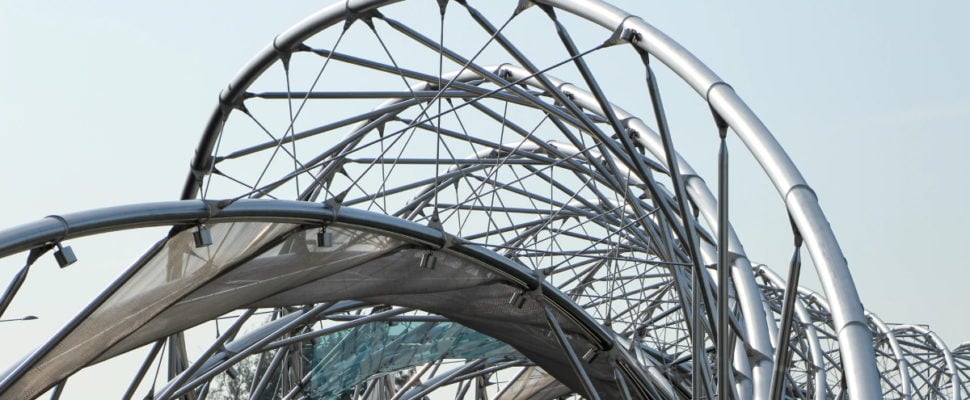One of the main supporting pillars of Singapore’s pharmaceutical industry is its magnificent manufacturing base. Not only does the city-state rank as one of the few countries on the planet that manages to export more medicaments than it imports, but it also plays host to over 50 pharmaceutical manufacturing facilities, including plants owned by eight of the world’s ten biggest drug makers.
“Being in Singapore, you can enjoy a level of manufacturing expertise and standards that you would be hard pressed to find replicated elsewhere across the region,” explains MSD’s Ashish Pal. “There are good reasons why our company maintains over 1,000 dedicated production staff based at a state-of-the-art facility in Tuas. Moreover, three of MSD’s six globally leading products are manufactured in-country right here,” he confirms.
The elevated reputation of ‘made in Singapore’ pharmaceuticals is widely acknowledged. In fact, over the past three decades, there have been zero major observations by overseas regulators such as the US FDA and EMA who habitually inspect and audit local facilities. “As a country, we’ve managed to assert ourselves over time as a hub for best-in-class manufacturing that is renowned for its superior technical quality and compliance with GMP and which then interlocks with the very highest standards of logistics and distribution network integrity,” reflects Ching Kiat Lim, managing director of Airhub Development at Changi Airport Group.
Meanwhile the medtech industry has also been ramping up its slice of the action. Courtesy of more than 30 dedicated medtech fabrication sites, Singapore today enjoys the distinction of being the producer of over 70 percent of world’s microarrays, ten percent of global contact lenses, and 50 percent of the planet’s thermal cyclers and mass spectrometers!
It is not just the sheer volume of Singapore’s manufacturing output that catches the eye, however, but also the rising sophistication of what is being produced. To develop flexible capacity options, the Singapore government has been busy partnering with CDMOs with a view to expanding the country’s capacity for commercial and clinical-scale production, as well as for novel modalities, such as cell and gene therapy, for pharmaceutical companies that wish to outsource their manufacturing needs.
“Singapore’s mature biomanufacturing industry didn’t just appear spontaneously overnight but is the product of years of careful strategic planning,” explains Lucas Chan, scientific founder and CSO of CDMO player Cellvec, a company that has been helping to advance gene transfer technologies through the manufacturing development of viral vectors. “There has been a concerted and cohesive effort on the part of the authorities to support each and every part of the value chain. No stone is left unturned. At one end of the spectrum, they have been investing in state-of-the-art production hardware. At the other they have been quick off the mark to design bespoke Cell and Gene Therapy (C>) product registration guidance so that there is a definite pathway to market for any product produced.”
Indeed, to ensure that Singapore’s medical science community manages to keep pace with the very latest developments in regenerative medicine, the government has invested SGD 80 million to establish three C> manufacturing technology research programmes. Meanwhile some 280 hectares of land has been set aside specifically for high-level pharmaceutical manufacturing at Tuas Biomedical Park (TBP).
Ng Huck Hui, assistant chief executive of the Biomedical Research Council within the Agency for Science, Technology and Research (A*STAR) sheds further light on the logic of this process. “Singapore is a small country with limited resources, which means that we have to be more focused in where we direct our resources to guarantee maximal impact. All investment must be precisely targeted, and stakeholders must be encouraged to join forces for the benefit of all. By bringing together state-of-the-art facilities and co-opting top talent, especially in areas like R&D, from both the private and public sectors, we aspire to stimulate innovation and to help industry scale the value chain,” he reasons.
When applied to the manufacturing segment, Singapore’s policymakers clearly understand that retaining future prowess in fabrication entails pushing into ever higher forms of complexity, technical sophistication and process innovation. After all, the city-state is a comparatively expensive place where space is at a premium and the cost of labour is high. “Manufacturers operating here need to bear in mind the associated cost factors and appreciate that there is little room for complacency… in the long-term, the business case only works if it involves advanced levels of automation, well-skilled manpower, niche competencies and a high degree of productivity,” posits Tim Philippi, executive director of the Singaporean-German Chamber of Industry and Commerce (SGC), who identifies certain parallels between the microstate’s value offering and those of DACH markets such a Switzerland and Germany.
“It’s always about striking balance between risk and payoff, and the inherent nature of innovation means there is no sure-fire bets. Despite the limitations of our market size, we have nonetheless so far proved able to consistently punch above our weight in scientific excellence. This is reflected in recent global innovation reports such as the Bloomberg 2020 Innovation Index, where Singapore leapt three spots and was ranked 3rd globally,” adds Ng.



